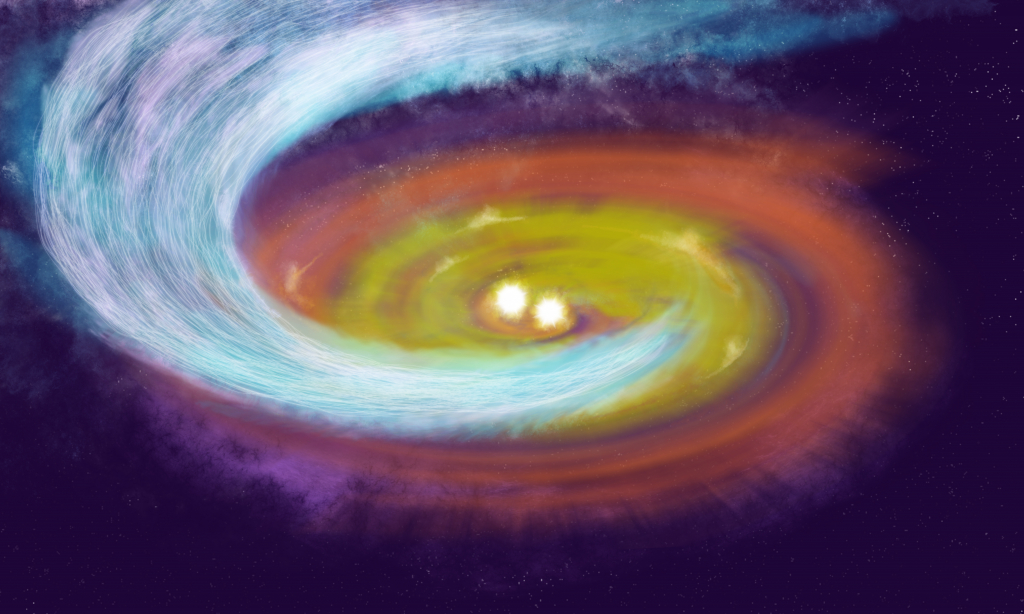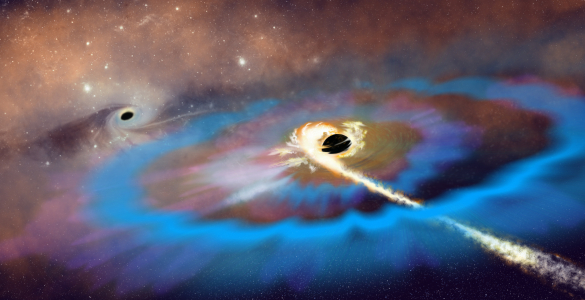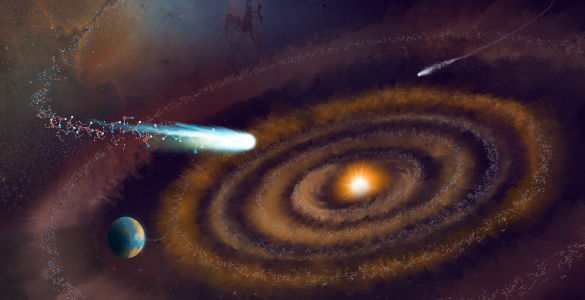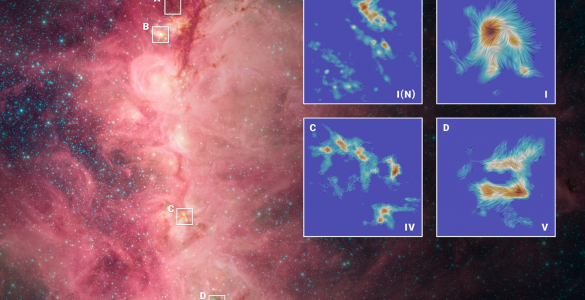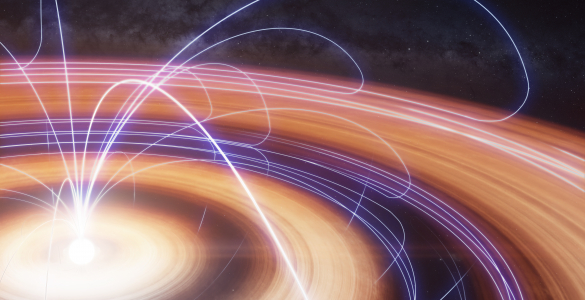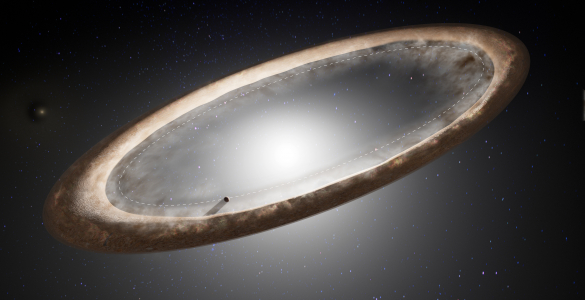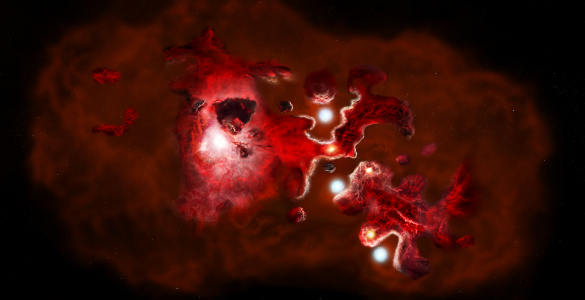A team of astronomers led by Paulo Cortes, a scientist with the U.S. National Science Foundation National Radio Astronomy Observatory and the Joint ALMA Observatory, have made a groundbreaking discovery about how young star systems grow. Using the powerful Atacama Large Millimeter/submillimeter Array (ALMA), their team observed— for the first time ever— a narrow, spiral-shaped streamer of gas guided by magnetic fields, channeling matter from the surrounding cloud of a star-forming region in Perseus, directly onto a newborn binary star system.
Stars are born from clouds of gas and dust, but recent observations show star birth is far more dynamic than previously thought. The team’s data captured both the dust and molecules swirling around the newborn binary star system, known as SVS13A, revealing that magnetic fields don’t just thread through these stellar nurseries— they actively steer the flow of material, providing a preferred route for gas to travel onto the disk where new stars and planets form.
Imagine a garden hose, but instead of water it’s smoothly delivering star-building material through a winding path carved by invisible forces. That’s the picture emerging from the ALMA observations: a channel of gas, dubbed a “sub-Alfvénic streamer,” regulated by spiral magnetic field lines. “This new data gives us a new window into star formation,” shares Cortes, “This streamer shows how magnetic fields can regulate star formation by shaping the infall of material, like a dedicated highway for the cars to move along.”
The ALMA images and data reveal two spiral arms of dust encircling the stars, with a streamer of gas that closely follows the same path. This remarkable alignment suggests gas in the streamer moves slowly compared to what was previously believed, supporting the idea of a magnetized channel rather than a turbulently collapsing cloud. The fact that such a streamer exists and connects the cloud to the disk— feeding material in a controlled way— means that gravity and magnetism both play crucial roles in building stars and shaping the planets that may eventually form around them.
This pioneering result, accepted for publication in Astrophysical Journal Letters, marks the first time astronomers have directly mapped both the streamer and its guided magnetic field in a single observation.
About NRAO
The National Radio Astronomy Observatory (NRAO) is a facility of the U.S. National Science Foundation, operated under cooperative agreement by Associated Universities, Inc.
About ALMA
The Atacama Large Millimeter/submillimeter Array (ALMA), an international astronomy facility, is a partnership of the European Southern Observatory (ESO), the U.S. National Science Foundation (NSF) and the National Institutes of Natural Sciences (NINS) of Japan in cooperation with the Republic of Chile. ALMA is funded by ESO on behalf of its Member States, by NSF in cooperation with the National Research Council of Canada (NRC) and the National Science and Technology Council (NSTC) in Taiwan and by NINS in cooperation with the Academia Sinica (AS) in Taiwan and the Korea Astronomy and Space Science Institute (KASI).
ALMA construction and operations are led by ESO on behalf of its Member States; by the National Radio Astronomy Observatory (NRAO), managed by Associated Universities, Inc. (AUI), on behalf of North America; and by the National Astronomical Observatory of Japan (NAOJ) on behalf of East Asia. The Joint ALMA Observatory (JAO) provides the unified leadership and management of the construction, commissioning and operation of ALMA.






